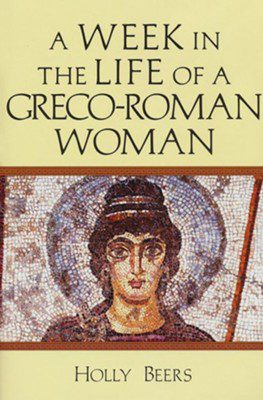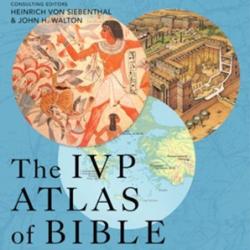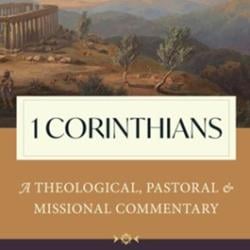Holly Beers has written an interesting book called A Week in the Life of a Greco-Roman Woman.
I caught up with Holly recently and interviewed her on the book.
Enjoy!
How long did it take you to write this book?
I wrote most of it in the summer of 2018, though my research and accumulation of sources began a few years earlier. I knew that I would need to have my research and basic organization in place before I could begin writing the novel itself.
List 3 “aha” moments that shed light on the New Testament as you did your research.
- The scope of poverty was overwhelming and surprising. When I realized that most people would work long days just to survive and access small amounts of food, it framed the way that I read texts such as “give us today our daily bread” in the Lord’s Prayer.
- The ways in which women were treated, or at least allowed to be treated, was at times painful for me to process. This was the first time I had looked at some of the primary texts, and it really helped me to see the ways in which the New Testament is casting a vision for better treatment and inclusion of women, even if often it is done in subtle ways that people today miss or misunderstand.
- As only elite women would have had the option of “staying home” with kids and domestic responsibilities all day (which then would often be managed by slaves), I developed an imagination for the many, many ways that women would have interacted in the various spaces of cities like Ephesus.
I now see women everywhere in the NT books!
What surprised you the most about the way Greco-Roman women lived in the first century?
The high levels of maternal and infant mortality rates were quite surprising but also understandable. I have had three babies, and likely would have died with the first one if I did not have access to the kind of medical care available in my context. In some contexts today women are at comparable risk levels to ancient Mediterranean women during pregnancy and afterwards.
I have read that during Paul’s day, the streets of Rome were littered with garbage and covered with flies. The garbage was never removed. The residents had to await a heavy downpour to flush it into the Tiber River. Does this comport with your own research? If not, what have you read that refutes it?
That may have been true in Rome; my research on this aspect was much broader. At least some sources indicate that sewage pits were sometimes cleaned out (and I have a scene that includes such a process), though it appears that people also relieved themselves in public areas if there were no public restrooms nearby. Flies would definitely be present, though the question of “garbage” is interesting because they did not live in a context where a lot of products were disposable. Food would never be wasted if it was edible, for example.
What were the main differences between Roman women and Greek women in the first century?
Because my setting was Ephesus and predominantly Greek in culture at the time, very early on I focused on Greek women rather than Roman women. I do not wish to overstate; I would need to go back to my earlier research and review it in detail. I will say that it appears that women in/around Rome and then in Macedonia (Philippi, Thessalonica, etc.) appear to have had a bit more access to various institutional, cultural, and governmental options than women elsewhere.
What kind of birth control was practiced by the Jews in the first century?
I have a sidebar in the book on birth control and related issues; it is likely that Jewish women practiced the kinds of options for birth control that many of their neighbors did. However, Jews were encouraged to raise all the babies born to them and not practice infanticide and exposure, two other post-birth options for birth control. We have ancient sources that deride the Jewish people for not participating in the typical practices of infanticide and exposure.
What kind of birth control was practiced by the Greek and Romans in the first century?
See my answer above. There were options for attempting abortion (including the use of sharp objects), but most families simply practiced infanticide or exposure post-birth if the baby was unwanted. Those options became a kind of birth control.
Can you give us some examples of how your book sheds light on the New Testament story in the book of Acts?
I used Acts 18-20 as a basic narrative framework for the book, so reading those chapters in tandem with my book would be quite illuminating in terms of possible connections. The ways that gossip spreads and rumors build, the desperate search for deliverance from evil powers that control, the challenges and opportunities to the Gospel (including by/connected to Artemis, the patron goddess of the city) are all narrated in my book from Anthia’s first-person perspective.
What else would you like potential readers to know about your book?
I hope it gives my readers a sense of the beauty and potential life change the Christian vision offered people, while also helping them to see the challenge and cost that so many early followers of Jesus paid because of their commitment to Jesus and what he accomplished. I wrote this book for people who love the New Testament and want to understand it more deeply as they grow in their own discipleship.













